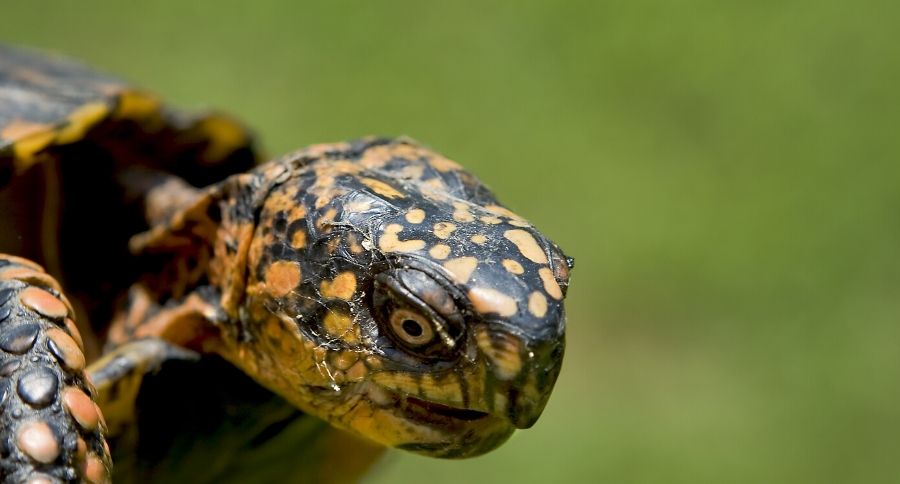North American box turtles are best for experienced reptile keepers, especially since they can live to 100 years! The average lifespan for the Terrapene genus is 50 years, which is pretty incredible.
Given these are not the best reptiles for beginners, what if you decide to dive in as you have some experience caring for turtles already? Then this guide will provide some tips and tricks.
So you've signed up for a long-term commitment and lifetime care of your box turtle! Now what? There are different species outlined below and each has slightly different housing and dietary needs.
What about housing?
You would think housing for box turtles would be easy, right?
Experts at Avian and Exotic provide some guidelines for housing:
- Enclosures should mimic the natural environment of your box turtle. Adjust the type of enclosure to best fit the type of box turtle you have.
- The best habitat is a large outdoor enclosure, bounded by siding, wood, bricks or cement blocks at least 18 inches high with an overhanging ledge to prevent climbing out. The pen must provide a variety of environments including sunny and shaded areas and places to hide. Turtles regulate their core body temperature by behavior and need to have a choice between sun and shade.
- If an outdoor enclosure cannot be provided, a large indoor enclosure can serve as housing. Box turtles generally do not thrive in a glass tank. Plastic children pools, sandboxes or concrete mixing tubs can make inexpensive habitats.
- Temperatures should range from 70-90°F (21-32°C) to enable the turtle to regulate its temperature. A 75-100-watt heat lamp or ceramic heat emitter is necessary to provide a basking area that is warmer than the rest of the container. The ideal basking area temperature is 85-90°F (29-32°C).
- Absorbent flooring material such as clean topsoil, leaves, moss or cypress mulch should be provided and changed regularly.
- A shallow water dish large enough for the turtle to soak in is required, as is an area that the turtle can hide in for a sense of security.
- Box turtles require natural, unfiltered sunlight for their health and wellbeing.
What do box turtles eat?
https://www.instagram.com/p/4rEp3WHEFx/
Box turtles are omnivores. Captive box turtles may be fed a diet that is 50 percent mixed fresh vegetables with some fruit, and 50 percent low-fat protein like canned low-fat dog food. The protein should be whole live foods like earthworms, mealworms, beetles, grubs, crickets, slugs and snails.
How big does a box turtle get?
https://www.instagram.com/p/B5OGTUDBkXl/
The different box turtle species include:
- Terrapene carolina (Common box turtle)
- Subspecies in this category include the Florida box turtle, Eastern box turtle, Gulf Coast box turtle, Mexican box turtle, three-toed box turtle, and the Yucatan box turtle.
- Terrapene coahuila (Coahuilan box turtle or aquatic box turtle)
- Terrapene nelsoni (Spotted box turtle)
- Terrapene ornata (Ornate box turtle)
- Subspecies in this category also include the desert box turtle
They will need an annual physical examination so make sure you have a vet in mind.
Fun facts?
- Male box turtles generally have bright red eyes
- Female box turtles generally have dark brown eyes
- Box turtle babies? Females lay 3-5 Box turtle eggs, which incubate 70-90 days before hatching
- They can live an average of 50 years of age
What is the age of the oldest pet you've ever lived with? Please leave us a comment below!
WATCH NOW: Why Pets Are the Best




